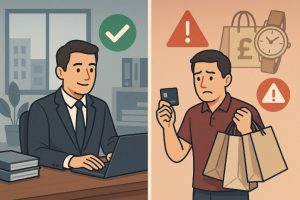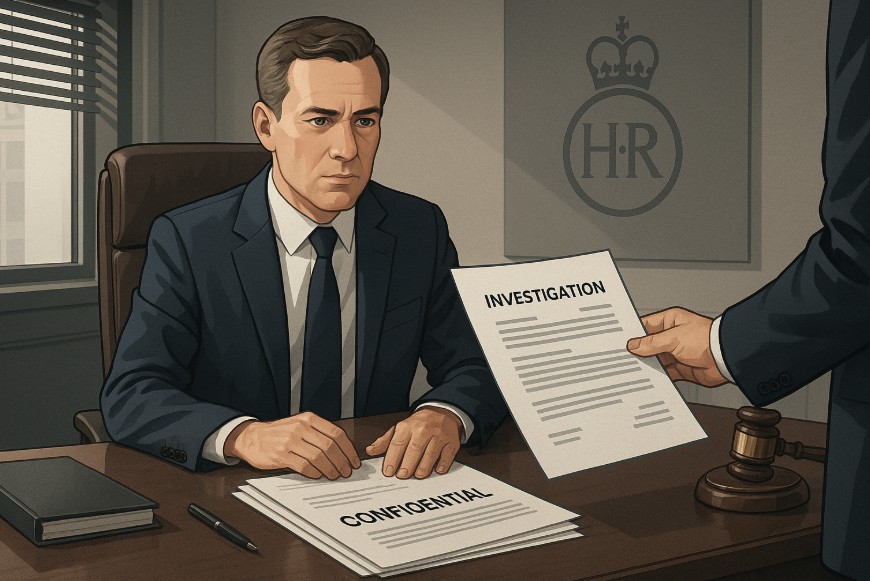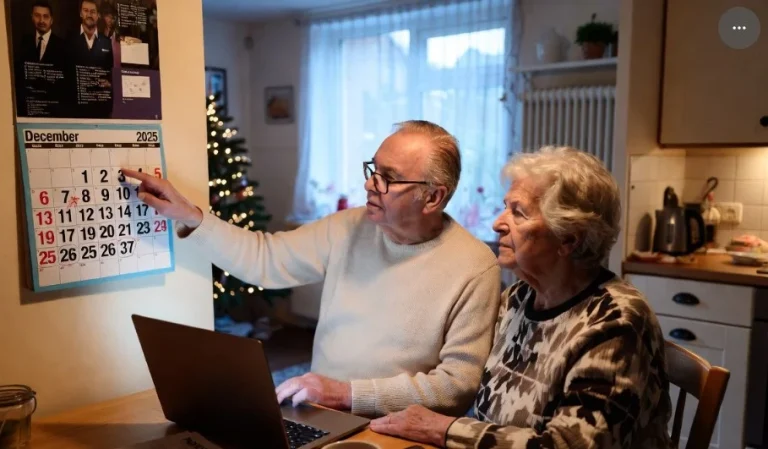The Bounce Back Loan Scheme (BBLS) was a lifeline for thousands of UK businesses during the COVID-19 pandemic. However, in the aftermath, HMRC has begun investigating suspected misuse of these funds.
As fraud cases rise, many company directors face serious legal scrutiny. Understanding your obligations, rights, and potential consequences is now more important than ever.
This guide explores what HMRC’s Bounce Back Loan investigation involves and how legal advice can help protect your position.
What Is The Bounce Back Loan Scheme (BBLS) And Why Was It Introduced?

The Bounce Back Loan Scheme (BBLS) was introduced by the UK government in April 2020 to support small and medium-sized enterprises (SMEs) that were experiencing financial hardship due to the COVID-19 pandemic.
The scheme allowed eligible businesses to borrow between £2,000 and 25% of their turnover, capped at £50,000.
The BBLS was one of several emergency funding programmes initiated during the pandemic, including:
- The Coronavirus Business Interruption Loan Scheme (CBILS)
- The Coronavirus Large Business Interruption Loan Scheme (CLBILS)
Unlike CBILS and CLBILS, the BBLS focused specifically on micro and small businesses, providing quick access to funding with minimal bureaucracy.
It required no repayments for the first 12 months and was 100% government-backed, making it a low-risk option for lenders.
What Are The Eligibility Requirements For The Bounce Back Loan Scheme?
To qualify for the BBLS, applicants had to meet strict yet self-certified criteria:
- The business must have been actively trading in the UK before 1 March 2020.
- It needed to be adversely affected by the COVID-19 pandemic.
- Over half of its income should have originated from its trading activity.
- The company must not have been in bankruptcy, liquidation, or insolvency proceedings.
- It had to confirm that the loan would not be used for personal purposes.
Despite these conditions, the government allowed businesses to self-certify their eligibility, a decision taken to speed up disbursement. However, this opened the door to abuse, as minimal checks were conducted prior to approval.
Regulatory checks such as Know Your Customer (KYC) and Anti-Money Laundering (AML) were expected but not always enforced rigorously due to the urgency of the pandemic response.
Why Is HMRC Investigating Bounce Back Loans Now?
The scale of the BBLS, combined with relaxed eligibility checks, led to significant levels of fraud and misuse.
By June 2021, government data and external audits indicated that a large number of loans were granted without proper oversight. This prompted HMRC and other government bodies to initiate investigations into misuse.
The primary goals of these investigations are to:
- Recover funds issued under false pretences
- Identify and prosecute fraudulent applicants
- Deter future misuse of government-backed funding schemes
Investigations are being carried out in coordination with:
- The National Investigation Service (NATIS)
- The Insolvency Service
- The Department for Business and Trade
- HM Treasury
According to figures published in September 2022, around 273 active BBLS-related investigations were underway with a combined value of £160 million. Additionally, 78 suspects had been processed and 49 arrests had been made.
What Constitutes Bounce Back Loan Misuse Or Fraud?

The Bounce Back Loan Scheme (BBLS) was created to offer swift financial assistance to businesses struggling during the COVID-19 pandemic.
However, the ease of access and the self-certification model made it vulnerable to misuse. Loan misuse or fraud occurs when the terms of the scheme are intentionally violated or when funds are used for unauthorised purposes.
Fraud does not only involve outright criminal intent. In some cases, it may arise from negligence, misinterpretation of eligibility, or financial desperation. Nonetheless, any misuse can result in investigation and potential penalties.
Misuse Through Ineligible Spending
The most common form of misuse involved spending the loan funds on non-business purposes.
The BBLS was clear that funds must be used for the economic benefit of the business. However, in many instances, directors diverted the money for personal gain.
Examples of ineligible spending include:
- Purchasing personal vehicles or luxury goods
- Funding holidays or non-essential lifestyle expenses
- Transferring loan amounts directly into personal bank accounts
- Making cash withdrawals without business justification
- Paying off personal credit cards or loans
These types of transactions, if flagged by HMRC or the Insolvency Service, can trigger investigations and potential recovery actions.
Falsification Of Turnover
One of the eligibility criteria for BBLS was that the loan amount would be calculated based on 25% of the business’s annual turnover. Since applicants were allowed to self-certify this figure, some deliberately overstated their turnover to secure a larger loan.
Turnover exaggeration could take several forms:
- Reporting projected or inflated figures instead of actual turnover
- Using combined income from unrelated business activities
- Including personal income or other non-business revenue streams
Falsification of financial data during loan application is treated as fraud by false representation under the Fraud Act 2006.
Concealment Of Financial Difficulty
Businesses that were considered ‘in difficulty’ on or before 31 December 2019 were not eligible for BBLS unless certain conditions were met. Some directors knowingly concealed the distressed financial state of their companies in order to qualify for the loan.
Indicators of concealed financial difficulty:
- Undisclosed insolvency proceedings or creditor arrangements
- Suppressed or edited financial records
- Misrepresentation of liabilities in application documents
This concealment not only invalidates the loan agreement but can also attract charges of fraudulent trading or false accounting.
Dissolution Following Loan Disbursement
Some businesses that received Bounce Back Loans were dissolved shortly after securing the funds. This action is seen as an attempt to avoid repaying the loan and can result in retrospective investigation.
Typical behaviours in these cases include:
- Applying for a loan while planning to close the company
- Ceasing trading activities shortly after receiving the funds
- Failing to notify HMRC or lenders about the company’s closure
Under new legislation, directors of dissolved companies can now be held personally liable if the company was improperly wound up following receipt of a Bounce Back Loan.
Use Of Multiple Businesses For Multiple Loans
The BBLS restricted borrowers to one loan per business group. However, some applicants manipulated corporate structures to obtain more than one loan.
Scenarios involving misuse through multiple applications:
- Using several shell companies to apply for separate loans
- Creating new companies with minimal trading history solely to access funding
- Structuring businesses to appear independent while they are, in fact, connected entities
This approach not only breaches the rules of the scheme but can also result in coordinated investigations across multiple entities and legal consequences for the individuals involved.
Collusion And Third-Party Transfers
In some cases, loan recipients transferred BBLS funds to third parties, such as friends or family members, without any legitimate business reason. These types of transactions are closely scrutinised by investigators and are often used as evidence of fraudulent intent.
Common indicators include:
- Large or unexplained transfers to individuals outside the company
- Payments to entities not involved in any business transaction
- Disguising personal transfers as supplier payments
Collusion between directors and other individuals to misappropriate loan funds can lead to conspiracy to defraud charges.
Fraudulent Vs Acceptable BBLS Use
| Use Case | Classification |
| Buying stock and paying business rent | Acceptable |
| Transferring full loan to director’s personal account | Fraudulent |
| Overstating turnover by 50 percent | Fraudulent |
| Paying staff wages and utility bills | Acceptable |
| Using funds to repay personal mortgage | Fraudulent |
| Applying under different company names | Fraudulent |
What Legal Consequences Can Directors Face For BBLS Fraud?

Directors who misuse Bounce Back Loans can face a range of legal penalties depending on the nature and severity of the offence. These include civil actions, regulatory sanctions, and criminal prosecution.
Below is a summary of potential consequences:
| Offence Type | Legal Consequences |
| False representation | Director disqualification, repayment orders, fines |
| Fraudulent trading or accounting | Imprisonment, confiscation of assets |
| Concealing company status | Criminal prosecution, extended bankruptcy restrictions |
| Misuse of funds for personal use | Compensation orders, Serious Crime Prevention Orders (SCPO) |
Several directors have already faced lengthy bans from managing companies. In one case, two directors received 11-year bans for obtaining £100,000 in loans by failing to disclose that their company was in a company voluntary arrangement.
In the first criminal prosecution involving BBLS, a director received a seven-year disqualification after obtaining a £20,000 loan while the company was being dissolved. The funds were used for personal expenses, including a car and cash transfers to family members.
What Are Some Real Cases Of Bounce Back Loan Fraud In The UK?
Since the closure of the Bounce Back Loan Scheme (BBLS), UK authorities have uncovered numerous cases of fraud involving misuse of the funds. These real-world examples provide a clearer picture of how the scheme was exploited and the legal outcomes for those found guilty.
Early Criminal Prosecutions
The first notable prosecution related to BBLS fraud involved a company director who received a £20,000 loan under false pretences. At the time of the application, the business was already in the process of dissolution something the director failed to disclose. Once the funds were received, they were not used for business recovery or growth.
Instead:
- £14,000 was given in cash to the director’s family
- The remaining amount funded the purchase of a car and insurance
Upon investigation, it was revealed the director never intended to use the loan for business purposes. The court found the director guilty of fraud by false representation, leading to a criminal conviction and a seven-year director disqualification.
Multi-Year Director Bans
In June 2022, two directors of a business received 11-year bans each after it was revealed they had fraudulently applied for Bounce Back Loans totalling £100,000. These directors failed to disclose that their company was subject to a Company Voluntary Arrangement (CVA), which would have made them ineligible.
Key factors in their case:
- The company had ongoing insolvency arrangements
- They overstated turnover to increase the loan amount
- The funds were not used for business recovery or continuity
Their disqualification was issued to prevent them from acting as directors or being involved in the formation or management of any UK company during the ban period.
Widespread Bankruptcy Restrictions
In August 2022, the Insolvency Service imposed bankruptcy restrictions on five individuals for BBLS misuse. These restrictions totalled 48 years across all parties and were based on various forms of misconduct, including:
- Using BBLS funds to repay personal debts
- Disbursing loans to friends and family
- Withdrawing funds in cash shortly after approval
- Using multiple dormant or dissolved businesses to apply for funding
Unlike disqualification, bankruptcy restrictions affect an individual’s financial activity more broadly. For instance, they may be required to seek court permission before obtaining credit above a certain threshold or acting as a company director.
Misuse in Dormant or Non-Trading Companies
Some of the most concerning cases involved applications submitted on behalf of companies that were either dormant or had ceased trading before the pandemic began. These entities were often revived or manipulated for the purpose of securing a loan.
The typical signs of fraud in these cases included:
- No genuine trading history before 1 March 2020
- No evidence of being adversely affected by COVID-19
- Use of template or forged documents to simulate trading activity
- Quick dissolution of the company post-disbursement
Such cases are now being retroactively investigated under the powers granted by the Ratings (Coronavirus) and Directors Disqualification (Dissolved Companies) Act, which allows for action against directors of companies that were improperly dissolved.
Patterns Identified by Investigators
Authorities such as HMRC, the Insolvency Service, and NATIS have identified recurring red flags in fraudulent BBLS applications:
- Artificial inflation of turnover to maximise loan entitlement
- Applications from newly formed or dormant companies with little financial history
- Transfer of loan funds to unrelated accounts or immediate cash withdrawals
- Lack of any business-related expenditure following loan receipt
Below is a table summarising typical fraud patterns versus legitimate use:
| Behaviour | Legitimate or Fraudulent |
| Use of funds to pay supplier invoices | Legitimate |
| Lump sum transferred to personal account | Fraudulent |
| Application submitted by a dissolved entity | Fraudulent |
| Funds spent on business equipment | Legitimate |
| Director applied for multiple BBLs personally | Fraudulent |
These patterns now form the basis for automated risk scoring and retrospective investigation efforts.
How Is The Insolvency Service Responding To BBLS Fraud?

The Insolvency Service plays a key role in detecting and addressing fraudulent BBLS claims. Its remit includes identifying directors who breached the terms of the scheme and enforcing disciplinary actions. The agency works closely with HMRC, NATIS and other government departments.
As of September 2022, the Insolvency Service had:
- Issued 242 director disqualifications
- Imposed 101 bankruptcy restrictions
- Completed one criminal prosecution
- Identified patterns of turnover exaggeration and fund misapplication
A major legislative boost came through The Ratings (Coronavirus) and Directors Disqualification (Dissolved Companies) Act. This law allows for retrospective action against directors of companies that were dissolved without proper liquidation. If those companies received a Bounce Back Loan and failed to repay it, the directors may now be investigated and held liable.
Can You Have More Than One Bounce Back Loan?
The rules of the BBLS specified that only one loan could be taken out per business group. However, the concept of a “group” was not clearly defined in the legislation, leading to confusion.
According to guidance issued by the British Business Bank:
- Separate companies owned by the same individual but not part of a group (i.e., not under a parent company) could each apply for a BBLS.
- If a holding company owned multiple subsidiaries, then those businesses were considered a group and only one BBL application was permitted.
Table below clarifies legitimate and non-legitimate scenarios:
| Business Structure | Eligibility for Multiple BBLs |
| Two separate legal entities (no holding company) | Eligible |
| One holding company with two trading subsidiaries | Not eligible for multiple BBLs |
| Dormant company revived for application | Not eligible, potential fraud |
| Same business applied under different names | Not eligible, definite fraud |
If a business breached these rules, even unintentionally, it could face investigation. Directors must therefore ensure all applications were compliant with the guidance issued at the time.
How Can Legal Advice Help Protect Your Rights During An HMRC Investigation?

Being subject to an HMRC investigation can have serious implications. Engaging a legal expert at the earliest stage is often the best course of action. Legal professionals can help in several ways:
- Assess whether the Bounce Back Loan was misused under current legislation
- Identify procedural issues or errors in the investigation process
- Prepare defence documentation and legal arguments
- Communicate with HMRC and the Insolvency Service on your behalf
- Advise on settlement options or negotiate reduced penalties
Solicitors with experience in director disqualification and financial crime cases are best equipped to handle BBLS-related investigations. Many firms also offer flexible payment terms, including fixed fees, hourly rates, or retainers.
Conclusion
HMRC’s ongoing investigation into Bounce Back Loan misuse highlights the importance of compliance and transparency in financial matters.
Directors found to have abused the scheme face penalties ranging from disqualification to criminal prosecution. If you are under investigation or uncertain about your loan application, seeking legal advice early is essential.
Professional guidance can help you navigate the process, respond to allegations effectively, and ensure your rights are protected throughout the inquiry.
Frequently Asked Questions
Can HMRC investigate a dissolved company for Bounce Back Loan misuse?
Yes. The Ratings (Coronavirus) and Directors Disqualification (Dissolved Companies) Act allows HMRC and the Insolvency Service to retrospectively investigate directors of dissolved companies suspected of BBLS fraud.
What penalties can I face for Bounce Back Loan fraud?
Penalties range from director disqualification and bankruptcy restrictions to criminal prosecution, imprisonment, and asset confiscation.
Will I go to jail if I misused a Bounce Back Loan?
Jail time is possible in cases of intentional fraud, especially when large sums are involved or if there is a clear pattern of deception.
How long do HMRC investigations typically take?
The duration varies depending on complexity, ranging from a few months to over a year. Delays can occur due to volume and coordination between agencies.
Can I appeal a director disqualification?
Yes, disqualifications can be appealed or contested in court, especially if the director can demonstrate lack of intent or reasonable behaviour.
What if I accidentally misused a BBL?
If you believe the misuse was unintentional, you should consult a legal professional immediately. They can help clarify your position and seek to mitigate consequences.
Who should I contact if I receive a notice from HMRC?
Contact a solicitor with experience in tax investigations or director disqualification. Prompt legal advice is critical to avoid severe penalties.








